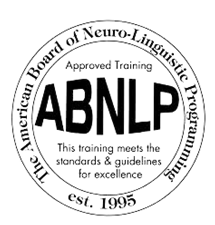Financial modeling is important for several reasons:
Decision-making: Financial modeling helps companies make informed decisions by providing a clear picture of the potential financial outcomes of different scenarios.
Forecasting: Financial modeling can be used to forecast future performance, allowing companies to plan and budget accordingly.
Risk management: Financial models can be used to identify risks and uncertainties associated with different business decisions, helping companies mitigate potential losses.
Capital raising: Financial models are often used to support capital-raising efforts, such as debt or equity financing, by providing investors with a clear understanding of the potential returns on their investment.
Valuation: Financial models can be used to value businesses or assets, allowing companies to make informed acquisition or divestiture decisions.
Reporting: Financial models are often used to create reports and presentations for internal stakeholders, board members, and external parties such as investors and regulators.
Overall, financial modeling is an essential tool for businesses of all sizes and industries to understand the financial implications of their decisions and make informed choices that maximize shareholder value.
Course Outline:
| I. Introduction to Financial Modeling | II. Building Financial Statements | III. Advanced Financial Modeling Techniques | IV. Model Auditing and Error Checking | V. Conclusion and Recap |
| A. What is financial modeling? B. Benefits of financial modeling C. Excel basics for financial modeling | A. Income statement 1. Revenue forecasting 2. Cost of goods sold (COGS) and gross profit margin (GPM) 3. Operating expenses and operating income 4. Depreciation and amortization 5. Interest expense and tax expense 6. Net income and earnings per share (EPS) B. Balance sheet 1. Assets 2. Liabilities 3. Equity C. Cash flow statement 1. Cash flows from operating activities 2. Cash flows from investing activities 3. Cash flows from financing activities 4. Net increase or decrease in cash and cash equivalents | A. Financial ratios analysis B. Forecasting techniques 1. Time series analysis 2. Regression analysis 3. Monte Carlo simulation C. Sensitivity analysis 1. Goal seek 2. Data tables 3. Scenario manager D. Valuation techniques 1. Discounted cash flow (DCF) analysis 2. Comparable company analysis (CCA) 3. Precedent transaction analysis | A. Best practices for reviewing and auditing financial models B. Techniques for error checking and troubleshooting C. Limitations and assumptions of financial models | A. Recap of key concepts and techniques covered in the training B. Resources for continuing learning and development in financial modeling C. Review of important takeaways and next steps for applying financial modeling skills in the workplace. |
I. Introduction to Financial Modeling
A. What is financial modeling?
B. Benefits of financial modeling
C. Excel basics for financial modeling
II. Building Financial Statements
A. Income statement
1. Revenue forecasting
2. Cost of goods sold (COGS) and gross profit margin (GPM)
3. Operating expenses and operating income
4. Depreciation and amortization
5. Interest expense and tax expense
6. Net income and earnings per share (EPS)
B. Balance sheet
1. Assets
2. Liabilities
3. Equity
C. Cash flow statement
1. Cash flows from operating activities
2. Cash flows from investing activities
3. Cash flows from financing activities
4. Net increase or decrease in cash and cash equivalents
III. Advanced Financial Modeling Techniques
A. Financial ratios analysis
B. Forecasting techniques
1. Time series analysis
2. Regression analysis
3. Monte Carlo simulation
C. Sensitivity analysis
1. Goal seek
2. Data tables
3. Scenario manager
D. Valuation techniques
1. Discounted cash flow (DCF) analysis
2. Comparable company analysis (CCA)
3. Precedent transaction analysis
IV. Model Auditing and Error Checking
A. Best practices for reviewing and auditing financial models
B. Techniques for error checking and troubleshooting
C. Limitations and assumptions of financial models
V. Conclusion and Recap
A. Recap of key concepts and techniques covered in the training
B. Resources for continuing learning and development in financial modeling
C. Review of important takeaways and next steps for applying financial modeling skills in the workplace.
Program Summary:
Class Room : 3-4 Full Days
Requirement: All participants have to have a Laptop with MS Office 2016
CPD Credit: 16 Hour















